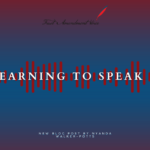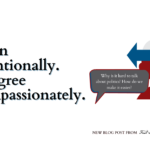 The free press in American society is under attack by political figures and everyday citizens calling articles written by reputable news organizations “fake news”. It’s an attempt to discredit journalists and diminish the credibility of reports that are seen as critical of politicians and/or government policies. “Fake news” is threatening the very foundations of our First Amendment rights pertaining to both freedom of the press and freedom of expression.
The free press in American society is under attack by political figures and everyday citizens calling articles written by reputable news organizations “fake news”. It’s an attempt to discredit journalists and diminish the credibility of reports that are seen as critical of politicians and/or government policies. “Fake news” is threatening the very foundations of our First Amendment rights pertaining to both freedom of the press and freedom of expression.
There are many different definitions of fake news, but we’ll focus on the main three: 1) Satire/parody, 2) “fake news” rhetoric and 3) Completely false news posing as real. Satire and parody news, such as Last Week Tonight and The Onion, create humorous (and obviously not real) articles meant as entertainment. Satire is a form of humorous critique that may contain elements of truth but presented in an exaggerated way to ridicule or expose the absurdity of a situation.
“Fake news” rhetoric is an entirely different matter. This is a political strategy that is being used to delegitimize traditional (mainstream) news organizations such as CNN, The Washington Post and The New York Times by dismissing reports published or broadcast by these press outlets. NPR refers to “fake news” rhetoric as a form of alternative language, in which anyone of any political affiliation can rebuke a news story they disagree with by calling it “fake news”.
Finally, we have actual fake news, which the Pew Research Center reports is also causing a great deal of confusion in American society. Fake news in this sense refers to completely false stories, which often are used as part of a coordinated effort to sway public opinion and/or as a way to generate ad revenue. A Buzzfeed analysis found that many fake news stories about the 2016 presidential election outperformed real news stories on social media. For example, a fake news story about the Pope endorsing Donald Trump for president received 960,000 shares, comments, and likes on Facebook before the election, while a real news story from The Washington Post about Trump and Hillary Clinton’s histories of corruption received just 849,000 shares, comments, and likes.
How is fake news harming our First Amendment rights? As mentioned previously, the Pew Research Center says “fake news” is hurting our democracy by confusing the public about what is real journalism and facts and what is fake. A 2016 study of more than 376 million Facebook users’ interactions with 900+ media outlets found another problem: People tend to seek out information that aligns with their political views. “Fake news” rhetoric is exacerbating the problem by making it socially acceptable for people to reject legitimate media reports that don’t align with their views as merely “fake.”
The phenomenon of fake news and fake news rhetoric subsequently diminishes the free press protections of the First Amendment by delegitimizing reputable news outlets with a long history of credibility, thereby making it harder for them to report real news. What can we do to combat “fake news” and preserve the freedom of the press? To combat “fake news” and protect our First Amendment rights for all, education is key. We must be diligent as consumers when it comes to determining which news outlets are publishing blatantly false “clickbait” articles for the purpose of making money from ad revenue instead of informing the public about legitimate current events. Facebook, Google, and other online organizations are currently developing new algorithms for detecting fake stories and fake news outlets, but it’s also up to us as responsible Americans to educate ourselves and our communities about media literacy.
HowStuffWorks has published an awesome list of 10 ways to spot fake news stories, which includes double-checking information with other sources, checking the URL of the publisher, being wary of incredulous-sounding headlines, and many more. Facticious also developed a game to help students and everyday Americans alike learn how to detect fake news stories. Although “fake news” rhetoric and fake stories are likely to remain a problem for many years to come, it’s vital that we advocate for real journalism and avoid fake sources that want to make money instead of inform their audiences.






